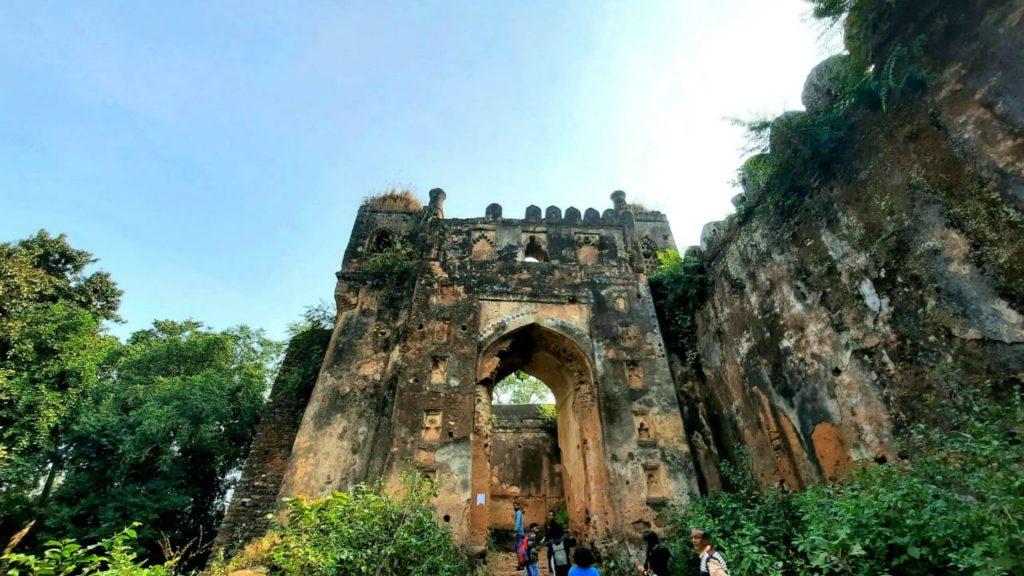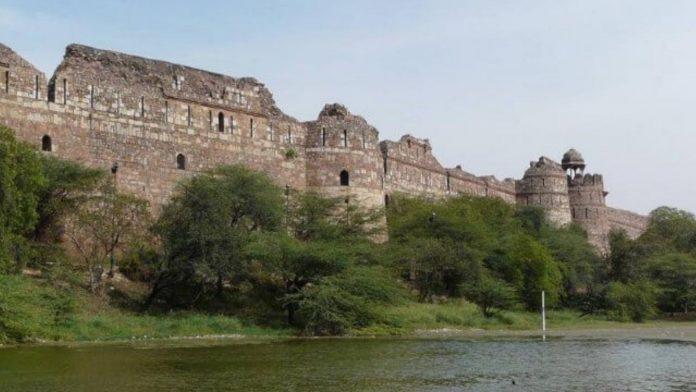Palamau is one of the twenty-four districts in north-western Jharkhand, India, on the border of Districts Chatra in the east, Garhwa in the west, Latehar in the south, and the state of Bihar in the north. It came into existence on 1st January 1928. The administrative headquarter of Palamau is Daltonganj, situated on the bank of the Koel River. The new name of Daltonganj is now Medininagar in the name of king Medini Ray.
The early history of Palamau is shrouded in legends and traditions. Autonomous tribes probably inhabited the area in past. Kharwars, the Oraons, and the Cheros established kingdoms over this area. Within this stretch, there is a small Village in Manika Block in Latehar District known as Betla which is famous for the National Park located here.
To have extensive knowledge about the history of Betla, books might help just to a certain extent but taking a trip into the heart of the erstwhile Chero kingdom might come in handy. Just within close proximity, there are two ruined forts located around 22 kilometers southeast of Medininagar. Also reckoned as the ‘Twin Forts’, the original fort lies on the plains and another one on an adjoining hill just a few minutes away, which were associated with the Vanvasi (forest dweller) kings of the Chero dynasty. The forts are rich in historical references which we will be talking about here. So, let’s get started right away.
The Landscape
According to the Government of Jharkhand, though there is confusion regarding the location of the Palamau Forts that whether they are within the borders of Palamau or Latehar, and the Forts are said to have just narrowly squeezed into the Latehar district, after it was etched out from Palamau and declared as a separate district on 1 January 1928 amidst impenetrable jungle areas of Betla.
The names have originated from the nearby river whose river bed is embedded with sharp rocks and were known as ‘Palamau’ which means the ‘fanged river’.
The forts, now in ruins, are not in such good condition at the moment. Time and nature have already started devouring it and no proper maintenance is taken.
The History

These forts were built by the rulers of the Rakshel Rajput dynasty. The Rakshel Rajput dynasty was invaded by the Chero King, Bhagwant Ray in 1613 who put an end to their reign. From here on, the Chero Dynasty’s rule began.
In 1574, during the reign of Akbar, the Mughals attacked the fort under Akbar’s able army commander Raja Man Singh. Although the Mughals captured the fort then, the Cheros fought back to reclaim their fort back in 1605 followed by the death of Akbar.
When Jahangir ascended the throne of Delhi, Ahmad Khan, the subedar of Patna and Palamau demanded the Cheros to pay a tribute in the name of the Rakshel Dynasty. The Cheros refused this imposement which eventually offended the Mughals and resulted in facing three sieges by the Mughals under the leadership of Daud Khan, who arrived at the Chero forts on 9 December 1660. He asked the Cheros to surrender under the terms of converting all the Hindu subjects, which the Cheros denied. Thus, this led to a massive war and the Chero King Medini Ray lost both the forts and took shelter in the jungle.
Later, Medini Ray reclaimed the fort after he defeated Daud Khan and resurrected Chero rule.
The new fort which is on the plains was rebuilt by ruler Medini Ray into a more substantial structure meant to withstand heavy warfares after he defeated the Maharaja of Chhotanagpur and won Navaratragarh. The renovated fort became known as the ‘Naya Qila’ and made its mark in the history of the district. Medini Ray was the most famous in the whole Chero line of tribal kings and was known for his just ways of ruling his kingdom. His kingdom was stretched from the areas in South Gaya till Hazaribagh.
Many years later, the British East India Company took control over both the forts. He made sincere efforts to promote agriculture and to better the desolate state of Palamau. The region became very prosperous and the people had ample food and other amenities of life.
But the successors of Medini Ray were incompetent and instigated a rivalry within the royal family which ultimately came to an end in 1771 after one of the members of the royal family facilitated the British to capture the fort. The Cheros fought valiantly but lost.
Architecture: Old Fort (Purana Qila)
Located on a hill and spread over 3 square kilometers, this one was built using lime and surkhi mortar. It has three gates each of 7 feet width, the largest being the Singh Dwar. The outside walls were constructed with sun-baked bricks. A two-storied construction is also seen beyond the Singh Dwar which was used by the king to hold court. Another gate leads to the ruins of three temples, which were modified into mosques by Daud Khan. The architectural style has clear Islamic influence due to the conquest of the fort by Daud Khan. And the third gate is a way to the Betla National Park.
A Naubat Khana, two watchtowers, and a small lake known as the Kamaldah Jheel, meant for the use of the women of the royal family, features the Purana Quila. From the ruins, it is also found that one of the watch towers had a temple within it. While the rulers and the artisans have disappeared in the realms of time, their artwork and sculptures are still prevalent.
The New Fort (Naya Qila)
Just to the west of the old fort, this one is a more formidable fortress made for defensive purposes by Medini Ray in 1673. The entrance gate is carved with Nagpuri style and is known as the Nagpuri Gate. There are traces of Mughal architecture everywhere too as there are pillars on both sides with Arabic inscriptions. Sanskrit inscriptions are also noticed which tells that the fort’s construction began in the month of Magh, 1680 according to the Hindu calendar.
Medini Ray left the fort under the supervision of his heir Pratap Ray who failed to give the finishing touch to the fort. The fort was thus incomplete.
There is also an entrance to a tunnel inside a deep well. The tunnel was constructed so that the people living in the place could evacuate in case of an invasion.
The pleasant climatic conditions
The region around Palamau Forts experiences an overall tropical climate. The months of March to June see a temperature hike up to 40-degree centigrade. It would be advisable to not visit the forts in the summer or in the monsoon i.e. from April till August.
The perfect season to make a trip to Palamau Forts is during the time between October and February. The weather is comfortable enough at that time.
Also read:


